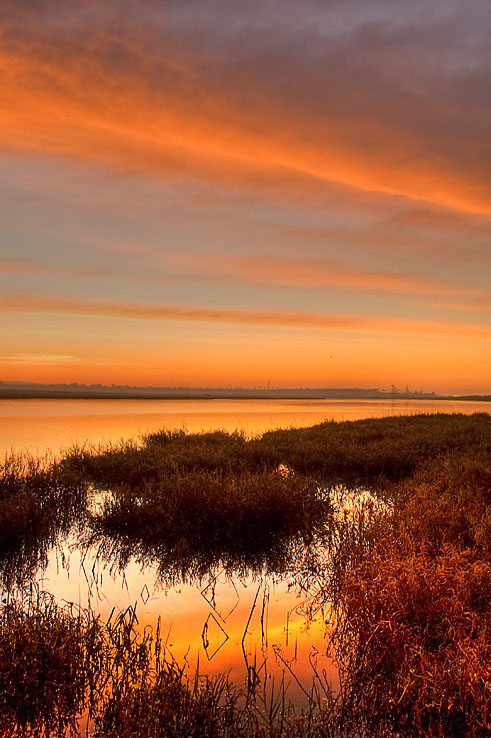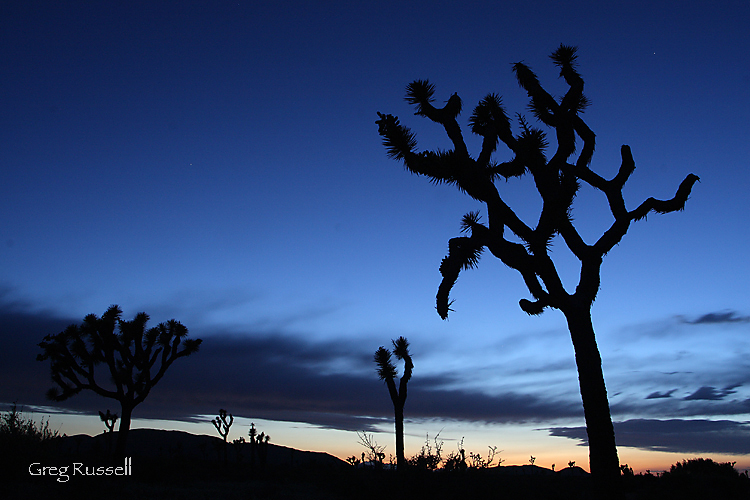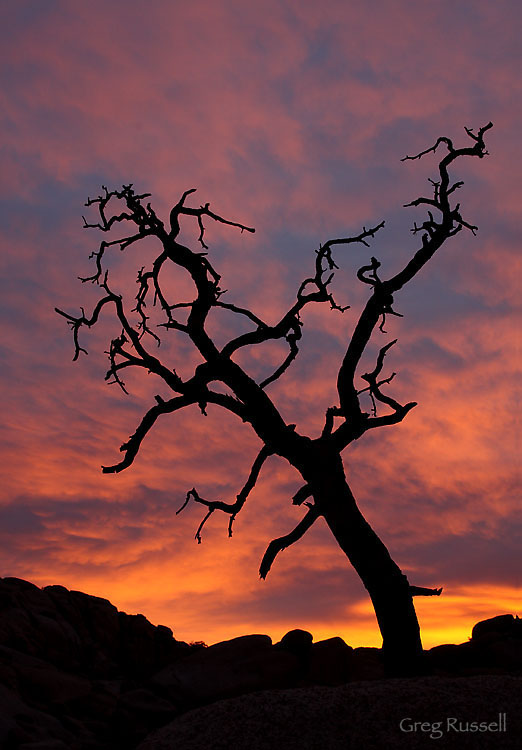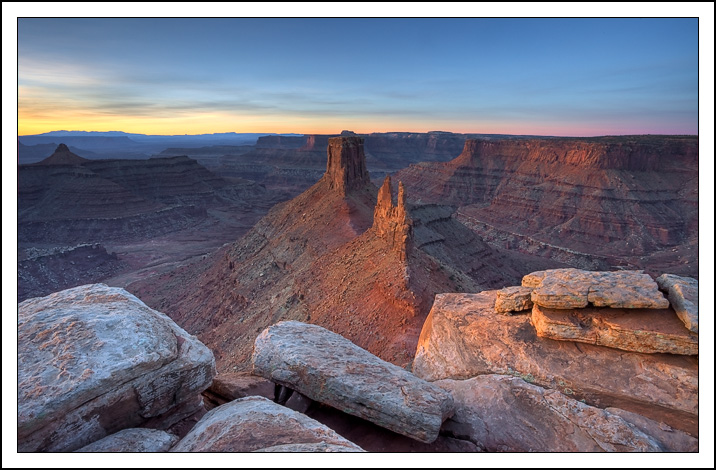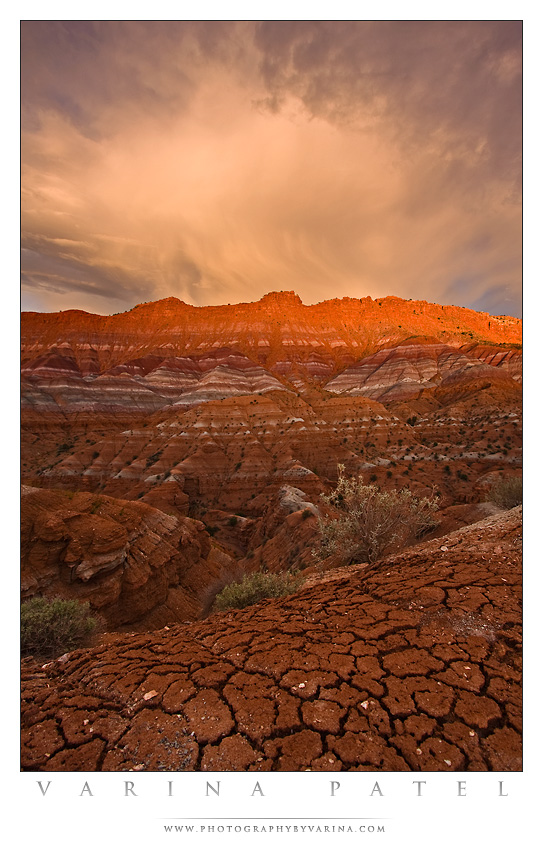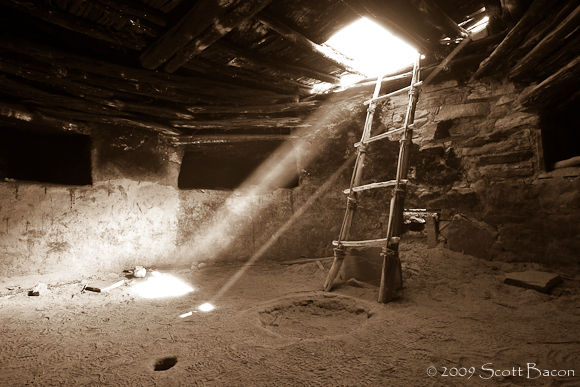Here’s another California sunrise from my new page, California Sunrises & Sunsets. This is a recent picture, taken last Friday morning at Bolsa Chica wetlands near Huntington Beach, California. Three original images were taken, -1, 0, and +1 EV, and were processed and tone mapped in Photomatix Pro. I’m quite happy with the result, as it was a beautiful way to start the day.
General
...now browsing by category
Another California sunrise
Monday, December 21st, 2009Dreaming of the San Juans
Monday, December 7th, 2009Growing up in northwestern New Mexico, one of the easiest mountain ranges to escape to were the San Juans of southern Colorado. An impressively rugged range, the San Juans were my playground in high school for skiing, camping, and backpacking. I have a lot of fond memories in this range, and because of its rugged demeanor, I have always enjoyed photographs from the area.
In response to Jim Goldstein’s call for photographers to obtain photographs from their own favorite photographers (was that as confusing as it sounded?) I recently contacted Guy Schmickle, who lives right at the base of the San Juans, about a possible print exchange. Guy and I have interacted a few times over email, but I was happy to hear about his excitement over Jim’s project. After a long discussion with my wife, we chose one of Guy’s prints to have in our house–the American Basin Waterfall–because it captures my love for this mountain range, and her love of waterfalls. He chose my “Stars over Mobius Arch” in return, and we exchanged 8 x 12s of these images.
It was really rewarding to do this exchange with Guy; I’ve admired his work for quite a while, and the photo looks fantastic hanging in our house. Now, if we could only settle on a spot for it to stay (my wife has tried out 2 locations already)…
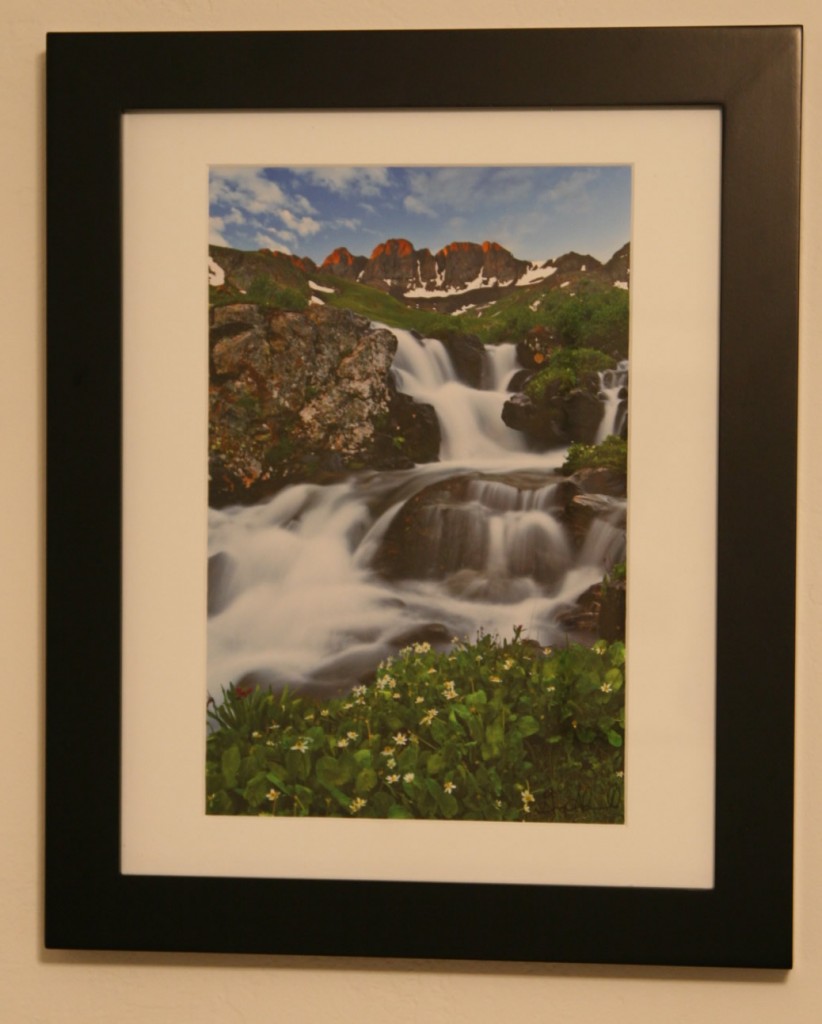
Photo of the Month–December
Tuesday, December 1st, 2009This month, I chose a seasonally festive, but different photo to display on my website. My “day job” is as a biology professor at Orange Coast College in Costa Mesa, CA. We have a fantastic horticulture faculty and staff, and they host a yearly poinsettia (Euphorbia pulcherrima) sale. Last week, I was able to sneak into the greenhouses before the sale begins to photograph the plants. They are very delicate, so I had to be careful not to touch the poinsettias, but I was able to find some really fun angles.
The red and white plants appeal to me the most, but they come in a variety of colors. If you’re in the area, you should make sure to stop by and pick up a plant or three for your holiday festivities. More about the plant sale can be found here. I’ll have a page up to display more poinsettia photos soon.

Poinsettia (Euphorbia pulcherrima), November 2009
Stark: photographing silhouettes
Friday, November 20th, 2009Almost any photographer will tell you that they enjoy making images of pretty things. Obviously “pretty” is subjective, but I’d lay the bet that most photographers wouldn’t argue with me. Often times, I feel like I’m speaking for the subject by saying, “Hey, this place is really cool, look at it and admire it!”
Its natural for any artist to speak for their subject, and I really don’t believe there’s anything wrong with it. But, sometimes, its nice to let the subject speak for itself. This is why I like photographing silhouettes.
A silhouette–of a tree, mountain range, anything–stands before you, stark and naked, telling its own story. Joshua trees (Yucca brevifolia) were given their name by Mormon pioneers crossing the Mojave Desert in the mid-19th century. Their shape reminded the pioneers of a biblical story in with Joshua lifted his hands to the sky in prayer. Looking at the above silhouettes of the joshua trees, you can almost see them raising their arms upward, paying their homage to the last vestige of the sun.
I’ll continue to speak for the land through my photography. However, I think its instructive and important to find a way to let your subject speak for itself; sometimes its just screaming to be heard. Finding your own powerful way of doing that will only help to make you a better photographer.
Featured Photographer–Bret Edge
Wednesday, November 18th, 2009Bret is the third featured photographer in my series on Topophilia, finding your sense of place in the canyons of southern Utah.
As I mentioned in a previous post, one of the reasons photographers seem drawn to southern Utah because of the solitude. According to the US census department, the population density in San Juan County, Utah in 2000 was 1.8 people/square mile. Parts of southern Utah have some of the darkest night skies in North America. So, that solitude isn’t an illusion–you really can be the only person for miles.
One of the reasons I admire Bret Edge’s photography so much is that he has a knack for capturing that vast solitude without making you feel lonely. A look through his portfolio has many images that interpret the expansive landscapes of southern Utah in a very real and tangible way.
I first met Bret late in 2008 through interactions on Naturescapes.net; he offered a ton of helpful advice as my wife and I planned a short trip to Moab after Christmas. Since then, I’ve appreciated his honest, thoughtful and constructive feedback on my own and other photographers’ images. Although not a Utah native, Bret has the pleasure of living in Moab, and by his own confession, he is practically addicted to the area. He and his wife moved there almost 4 years ago, and have embraced the landscape (he proposed to his wife under Delicate Arch!)…and its embraced them. Bret says, “Funny how Moab and the Southwest just kind of grabs hold of you and doesn’t let go.”
From his home base in Moab, Bret offers dynamic workshops and photo tours (which you can read about here) in the Moab area and beyond. In addition to registering for one of his workshops, make sure to subscribe to his blog for trip reports, new images, gear reviews and workshop updates.
Featured Photographer–Guy Tal
Friday, November 13th, 2009Guy is the third featured photographer in my series on Topophilia, finding your sense of place in the canyons of southern Utah.
In my next post, I’ll be writing about the grand, wide open landscape that draws tourists and photographers to southern Utah. However, if you look closely, you will also find an intimately beautiful landscape–one that is not immediately apparent, but if you take the time to find it is equally rewarding.
Working on these posts, I’ve enjoyed getting to know my friends a little bit better. I respect all of their work immensely, and aspire to have as breathtaking a portfolio as any one of them. Over the course of my photographic career, Guy Tal has inspired me in many ways, but one that stands out is his expertise in bringing the intimate landscape of southern Utah to life. Whether you’re in Utah or Ohio or Alberta, Guy’s images are a reminder to stop and look at the details.
In his comment on my first post in this series, Guy said:
“This place does something to you. I couldn’t rest until I managed to make a home here, and no other place ever felt more like home to me. More amazing is the fact that I keep discovering it over and over in deeper and more profound ways every time I step out the door.”
Guy’s thoughts crystallize for me the most salient theme in this series of posts: that, in a very real way, going out is really going in. I have heard that several times throughout my life, but until you actually experience that idea, they really are just words. I feel fortunate to have a group of colleagues (in other photographers) who feel the same way.
You can visit Guy’s website here, and subscribe to his blog here. In addition, Guy leads photo workshops, with the most recent one being in Capitol Reef National Park. You can read about them (and sign up for one!) here.
Featured Photographer–Varina Patel
Tuesday, November 10th, 2009Varina is the second featured photographer in my series on Topophilia, finding your sense of place in the canyons of southern Utah.
In asking other photographers about what draws them to southern Utah, a theme that runs through their answers is the solitude. During my exchange of emails with Varina Patel, she said it very well:
“Can you think of a spot where you can stand for an hour, and not hear a single car pass by, a single plane fly overhead, or another human voice besides your own? You can find countless spots like that in Utah.”
I think many landscape photographers need that solitude as surely as they need oxygen or water, and they begin taking images as a way to search out and capture that feeling. Perhaps that’s why so many of us feel at home in southern Utah.
Much of southern Utah is located on the Colorado Plateau, which was uplifted during a series of relatively violent geologic events. Despite the nature of its creation, the landscapes of southern Utah are amazingly elegant. That elegance is what drew me to Varina’s photography. Her compositions are simple, with brilliant lines and colors, and are technically perfect. Her photos draw you in, letting the lines lead you through the frame, inviting you into the landscape. Looking at her portfolio, it is evident that Varina–like many other photographers who have fallen victim to the landscapes of the Colorado Plateau–feels a deep connection with the earth.
Varina, with her husband Jay, run multiple workshops, including day workshops on a method of post-processing they have dubbed intelligent HDR (or iHDR). The idea is to process the parts of the image that actually need an HDR treatment, rather than the whole frame. The latter has a tendency to make an image look garish or unnatural. Her expertise in post-processing is evident in looking at her images, and I hope I can achieve that level of understanding…someday!
Like Scott Bacon, Varina told me to choose which image of hers I would like to display. I chose this image, taken in the Grand Staircase-Escalante National Monument. Varina gave me a fantastic description of the image, and of the landscape. Rather than me try to butcher her words by paraphrasing, I’ll share her sentiments:
“…this is a spectacular location. It’s in the Southwest region of Grand-Staircase Escalante National Monument. The Native Americans called it ‘The Land of the Sleeping Rainbows.’
The first time we visited this location, we stopped near this spot, and got out of the car. We stood there in awe of the view. Those bands of color you see in the mountains stretch for miles in every direction… and the landscape here is completely unpredictable. We’ve visited this spot several times now, and we’ve only explored a small piece of it. I think I could shoot here for weeks on end, and never get tired of it.
On this particular day, we arrived in time to scout locations before we set up our cameras. We could see these storm clouds rolling in, and were pretty excited about the prospect for some nice shots. The storm clouds were moving fast, and the light was incredible. I found a patch of cracked earth, and used that as my foreground – in an attempt to give the viewer a more intimate view of the location… as if they could step right into the photo.”
You can visit Varina’s website here, learn more about her workshops here, and subscribe to her blog here.
Featured Photographer–Scott Bacon
Sunday, November 8th, 2009Scott is the first featured photographer in my series on Topophilia, finding your sense of place in the canyons of southern Utah.
I’ve only discovered Scott’s work recently, but am very happy I did. His work conveys to me a simple beauty, one that is achieved when one feels a close connection to a place. The first images of Scott’s that drew me in were, of course, his photos from Cedar Mesa, in southern Utah. Upon viewing them, I was reminded of several backpacking trips with my dad growing up in canyons like Slickhorn, Owl, and Fish. These canyons are densely littered with archaeological sites that–whether pictographs or ruins–draw you in with a sense of reverence.
According to Scott:
“There are countless remote canyons containing treasure troves of land forms, flora and remnants of past civilizations just waiting to be seen. For me, there is no better feeling than slinging my camera pack and walking off into discovery. And the experience of solitude in these wild places simply fulfills me like nothing else.”
He asked me to choose which image of his I’d like to feature, and my choice was easy. I chose his image of Slickhorn Kiva, not only because its very well executed technically, but because it conveys the spirit of the Old Ones–the Anasazi who lived in the area–and reminds me why I love this place.
Please visit Scott Bacon’s website here, and make sure to subscribe to his blog here. In addition to these stunning photos from southern Utah, he has beautiful images from the Rocky Mountains, focusing on his home state of Colorado.
The Mountain Photographer
Sunday, October 25th, 2009One of my very first photographic inspirations was Galen Rowell. Before I was a photographer, I knew who Galen was, and I greatly admired his work. I was always impressed by the intimate way in which he connected the viewer to the subjects in his images. On top of that, I have always looked up to him as a human being as well. For lack of better words, he just seemed like a good guy. Those who knew him seem to be able to attest to that.
Galen and his wife Barbara lost their lives on the day my wife and I moved to California–August 11, 2002. I remember moving into our apartment in 115 degree heat, turning on NPR that evening, and hearing about the loss. It really was just that: a loss to the photographic community, environmental community, climbing community, and global community. However, I think we’re fortunate that Galen’s photographs continue to bring us closer to our world. This is due to a lot of hard work by his friend and family, and the brilliance of his photographs becomes quickly evident when you walk through his gallery in Bishop, CA. People walk around silent, in awe…inspired.
On my recent Sierra trip, I was able to visit Mobius Arch for the first time. Located in the Alabama Hills outside of Lone Pine, CA, Mobius frames the tallest peak in the contiguous U.S.–Mt. Whitney–perfectly. Although Mobius has many alternative names, my favorite is “Galen’s Arch” as a tribute to Galen Rowell.
Making these images and thinking about my motivation for taking photos, I’m reminded of part of Galen’s writing:
The Mountain Photographer
My interest in photography did not begin with books or mentors, or with any burning desire to see the world through a camera. It evolved from an intense devotion to mountains and wilderness that eventually shaped all parts of my life and brought them together. Photography was never simply a hobby or a profession for me. Once I began taking pictures, it became an integral part of my life.
Despite the occasional frustration, that’s how I view my photography. I am grateful to have Galen Rowell to thank for both my early and continued inspiration.
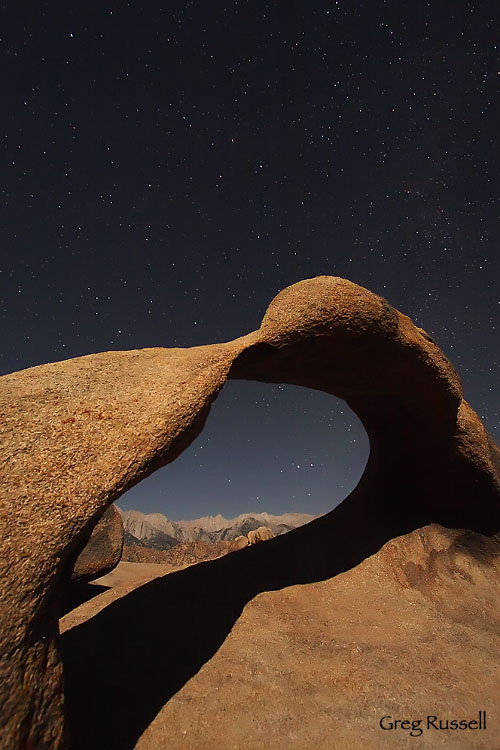 Galen’s Arch by starlight, Alabama Hills, California, October 2009
Galen’s Arch by starlight, Alabama Hills, California, October 2009
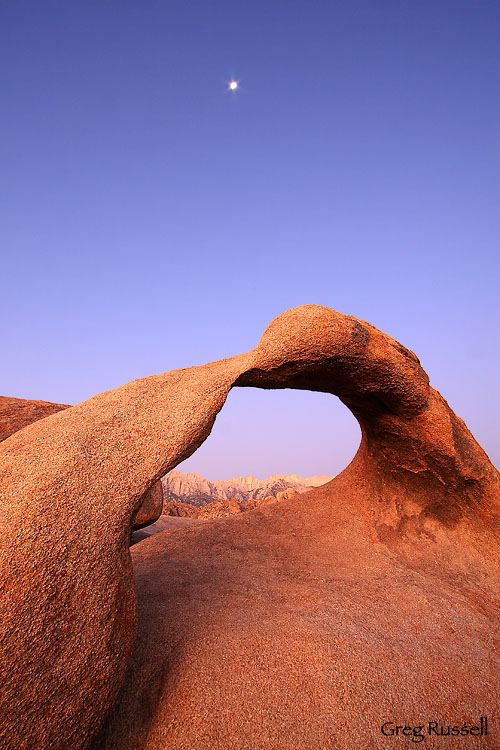 Galen’s Arch at dawn, Alabama Hills, California, October 2009
Galen’s Arch at dawn, Alabama Hills, California, October 2009
This post also appears here, as part of the California Nature Photographer’s blog.
Friday Marginalia
Friday, October 23rd, 2009Its been a couple of weeks since I’ve had time to sit down and compile a weekly collection of news and tidbits from the photographic world. However, there are some noteworthy things this week, and I don’t mean it to be Yosemite-centric, I promise!
- The Yosemite Renaissance is celebrating its 25th anniversary with a juried art exhibition. The deadline for submissions is November 14.
- The Ansel Adams Gallery National Park photo contest deadline is coming up at the end of October. I need to get my entries together!
- Watching the recent Ken Burns series on our national parks, I was particularly struck by the art of Chiura Obata. Some of his wood cuttings and water colors from the Sierra Nevada region are simply breathtaking and are very moving for me. To see some of Obata’s work, click on the link above–I hope you enjoy them!
- This is more personal, and not necessarily photographically related, but how much plastic did you throw away today? As people who care for and want to nurture our planet, it is a good time to think about the choices we make, and their long-term effects.
- Finally this week, Jim Goldstein started his 2009 blog project of buying prints from your favorite photographers. According to Jim:
“The goal of this project is to introduce fine art photography, photography books, print exchanges, and other photography related products to photography fans of all walks of life. It is also to spur photography fans to think in terms of financially supporting talented photographers so they can continue to do what they love.”
So, support your favorite photographers! I need to do just that, possibly through a print exchange…
I think that’s all I know this week; have a great one!

